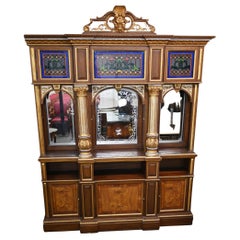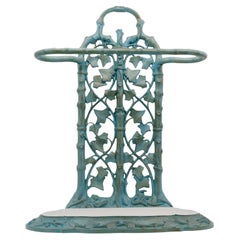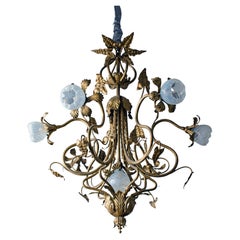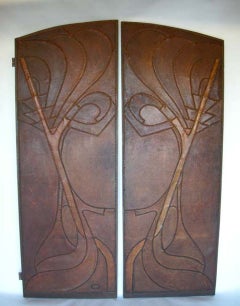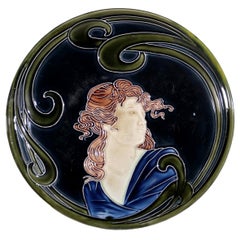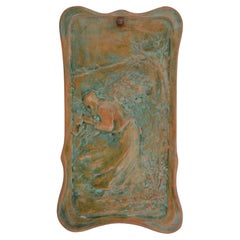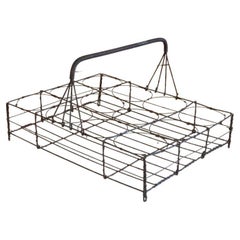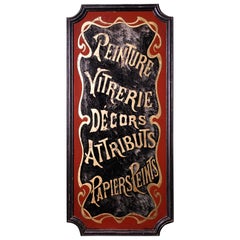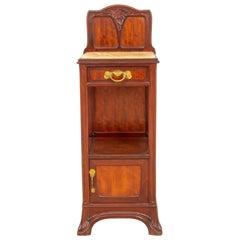French Art Nouveau Furniture
Vintage 1980s Art Nouveau Furniture
Other
Early 20th Century French Art Nouveau Umbrella Stands
Iron
Vintage 1910s French Art Nouveau Chandeliers and Pendants
Gold
Early 20th Century French Art Nouveau Decorative Art
Leather
Antique Early 1900s French Art Nouveau Decorative Art
Ceramic
Early 20th Century French Art Nouveau Decorative Art
Brass
Early 20th Century French Art Nouveau Antiquities
Wire
Antique 1890s French Art Nouveau Paintings
Glass, Hardwood
Early 20th Century French Art Nouveau Furniture
Onyx
Vintage 1920s French Art Deco Doors and Gates
Bronze
Antique 1890s French Art Nouveau Chairs
Fruitwood
Antique Late 19th Century French Art Nouveau Pedestals and Columns
Ceramic
Vintage 1920s French Art Nouveau Models and Miniatures
Bronze, Wire
Antique Late 19th Century French Art Nouveau Antiquities
Ceramic
Vintage 1910s French Art Nouveau Contemporary Art
Wood
Antique Early 1900s French Art Nouveau Busts
Synthetic
Vintage 1940s French Art Nouveau Table Lamps
Wrought Iron
Antique Mid-18th Century Art Nouveau Furniture
Velvet, Mahogany
Antique 1860s French Art Nouveau Glass
Glass, Art Glass
Vintage 1910s French Art Nouveau Side Tables
Marble
Antique Late 19th Century French Art Nouveau Ceramics
Ceramic
Early 20th Century French Art Nouveau Table Lamps
Spelter
Early 20th Century Art Nouveau Furniture
Velvet, Wood, Oak
Early 20th Century French Antiquities
Metal, Silver
Antique Early 1900s French Art Nouveau Decorative Art
Fruitwood
Vintage 1920s French Art Deco Table Lamps
Brass
Antique Late 19th Century French Art Nouveau Armchairs
Cane, Walnut
Vintage 1910s French Art Nouveau Dining Room Tables
Walnut
Antique Late 19th Century French Art Nouveau Children's Furniture
Fruitwood
Early 20th Century French Art Nouveau Tables
Ebony, Macassar, Walnut
Vintage 1910s French Art Deco Vases
Glass, Art Glass
Antique 19th Century French Art Nouveau Antiquities
Bronze
Antique Late 19th Century French Art Nouveau Commodes and Chests of Drawers
Wood
Early 20th Century French Art Nouveau Vases
Zinc
Antique Late 19th Century French Art Nouveau Vitrines
Walnut
Antique 1890s French Art Nouveau Chandeliers and Pendants
Bronze, Wrought Iron
Vintage 1930s French Art Nouveau Planters, Cachepots and Jardinières
Brass
Antique Late 19th Century French Art Nouveau Inkwells
Bronze
Antique Early 1900s French Art Nouveau Centerpieces
Crystal, Bronze
20th Century French Art Nouveau Mantel Mirrors and Fireplace Mirrors
Antique Late 19th Century French Art Nouveau Ceramics
Ceramic
Antique Late 19th Century French Art Nouveau Pedestals
Early 20th Century French Art Nouveau Andirons
Wrought Iron
Antique Late 19th Century French Art Nouveau Clocks
Marble, Onyx, Ormolu
Antique Late 19th Century French Art Nouveau Pedestals
Wood
Early 20th Century French Art Nouveau Boxes
Silver
Antique Late 19th Century French Art Nouveau Tables
Walnut
Early 20th Century French Art Nouveau Armchairs
Walnut, Upholstery
Early 20th Century French Art Nouveau Sideboards
Brass
20th Century French Art Nouveau Candlesticks
Copper, Bronze
Vintage 1910s French Art Nouveau Chandeliers and Pendants
Bronze
Early 20th Century French Art Nouveau Dining Room Tables
Walnut
Early 20th Century French Art Nouveau Sculptures
Marble, Bronze
Antique Early 1900s French Art Nouveau Chairs
Wood
Early 20th Century French Art Nouveau Figurative Sculptures
Marble, Pewter
Antique Late 19th Century French Art Nouveau Doors and Gates
Walnut
Early 20th Century French Art Nouveau Side Tables
Bronze
Vintage 1910s French Art Nouveau Wall Mirrors
Brass
Antique Late 19th Century Art Nouveau More Dining and Entertaining
Pewter
Early 20th Century French Art Nouveau Chairs
Wood
- 1
- ...
French Art Nouveau Furniture For Sale on 1stDibs
How Much is a French Art Nouveau Furniture?
- What is Art Nouveau furniture?1 Answer1stDibs ExpertAugust 15, 2019
Art Nouveau furniture was a style of furniture that emerged at the end of the 19th century and was characterized by its complex curved lines. The curved details in the furniture were typically carved by hand and finished with lacquer. The unmistakable gloss that is associated with Art Nouveau comes from the thick coat of varnish applied to the furniture as the final step of the production process.
